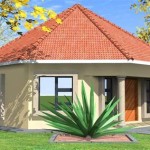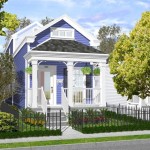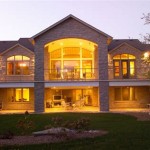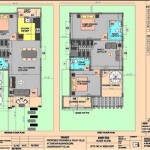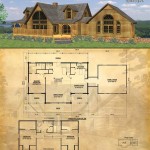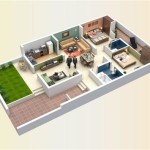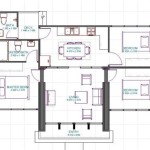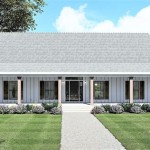Costa Rican Home Plans: Designing for Paradise
Costa Rica, a nation renowned for its breathtaking natural beauty, vibrant culture, and commitment to environmental sustainability, presents a unique set of considerations for home design. Costa Rican home plans must harmonize with the tropical climate, respect the surrounding ecosystem, and reflect the lifestyle preferences of its inhabitants. This article explores the core aspects of home design in Costa Rica, delving into architectural styles, material choices, and key considerations for creating a functional and aesthetically pleasing living space.
Developing a successful Costa Rican home plan requires a deep understanding of the local environment. The country’s diverse topography, ranging from coastal plains to mountainous regions, dictates the necessary adaptations to ensure both structural integrity and comfortable living. Considerations include prevailing winds, rainfall patterns, sun exposure, and potential seismic activity. Ignoring these factors can result in costly repairs and uncomfortable living conditions. A well-designed home must not only withstand the elements but also leverage them to promote natural ventilation and reduce reliance on artificial climate control.
Architectural Styles Reflecting Costa Rican Identity
Costa Rican architecture is a melting pot of influences, drawing inspiration from indigenous traditions, Spanish colonial heritage, and contemporary design principles. Several distinct styles have emerged, each with its own unique characteristics.
Traditional Costa Rican Architecture: This style, often seen in older homes and rural areas, emphasizes simplicity and functionality. Homes are typically constructed with locally sourced materials such as wood and bamboo. Elevated foundations are common to protect against flooding and pests. Large, open-air verandas, or corredores, provide shaded outdoor living spaces and facilitate natural ventilation. The use of vibrant colors, particularly on the exterior walls, is characteristic of this style.
Colonial Architecture: A legacy of Spanish colonization, this style features elements such as tiled roofs, arched doorways, and central courtyards. Walls are often thick and constructed from adobe or stone, providing insulation against the heat. Decorative details, such as wrought iron balconies and intricate tile work, add a touch of elegance and sophistication.
Contemporary Tropical Architecture: This modern style seeks to blend seamlessly with the natural environment. It emphasizes open floor plans, large windows, and the use of natural light. Materials such as sustainably harvested wood, bamboo, and concrete are often incorporated. Green roofs, rainwater harvesting systems, and solar panels are increasingly common features of contemporary tropical homes, reflecting a commitment to sustainability.
Beachfront Architecture: Homes designed for coastal living prioritize unobstructed ocean views, protection from saltwater corrosion, and comfortable outdoor living spaces. Elevated construction is crucial to prevent damage from rising sea levels and storm surges. Durable materials such as concrete, treated wood, and stainless steel are essential. Large decks and balconies provide ample space for relaxation and entertainment.
Material Selection for Durability and Sustainability
The choice of building materials is a critical factor in Costa Rican home design. Selecting materials that are durable, sustainable, and appropriate for the local climate is essential for creating a long-lasting and environmentally responsible home.
Wood: A readily available and versatile material, wood is widely used in Costa Rican construction. Teak, cedar, and other hardwoods are prized for their durability and resistance to rot and insects. Sustainably harvested wood is essential to ensure responsible forestry practices. Proper treatment and maintenance are necessary to protect wood from moisture and pests.
Concrete: Concrete is a strong and durable material that is well-suited for foundations, walls, and floors. Reinforced concrete is particularly important in areas prone to seismic activity. Concrete can also be stained, polished, or textured to create visually appealing surfaces.
Bamboo: A fast-growing and renewable resource, bamboo is an increasingly popular choice for sustainable construction. It can be used for structural elements, walls, and decorative features. Bamboo is lightweight, strong, and resistant to earthquakes. However, it requires proper treatment to prevent insect infestation.
Natural Stone: Locally sourced stone adds a touch of elegance and durability to Costa Rican homes. It can be used for walls, floors, and landscaping. Stone is naturally resistant to weathering and requires minimal maintenance.
Tiling: Ceramic and porcelain tiles are widely used for floors and walls, particularly in bathrooms and kitchens. They are durable, water-resistant, and easy to clean. Tiled roofs are also common, providing protection from the elements and adding a distinctive aesthetic to Costa Rican homes.
Sustainable Building Practices: Incorporating sustainable building practices is increasingly important in Costa Rican home design. This includes using recycled materials, minimizing waste, and implementing energy-efficient technologies. Green roofs, solar panels, and rainwater harvesting systems are becoming more common, reducing the environmental impact of homes and lowering utility costs.
Key Considerations for a Functional and Comfortable Home
Beyond architectural styles and material choices, several key considerations contribute to the functionality and comfort of a Costa Rican home.
Natural Ventilation: Optimizing natural ventilation is crucial for maintaining a comfortable indoor environment in the tropical climate. Strategic placement of windows and doors, along with the use of ceiling fans, can promote airflow and reduce reliance on air conditioning. Cross-ventilation, where air flows through the house from one side to the other, is particularly effective.
Sun Shading: Protecting the home from direct sunlight is essential for reducing heat gain and preventing glare. Overhangs, awnings, and strategically planted trees can provide effective shading. The use of tinted windows or reflective window films can also help reduce heat transfer.
Water Management: Costa Rica experiences heavy rainfall during certain times of the year. Proper drainage is essential to prevent flooding and water damage. Gutters, downspouts, and well-designed landscaping can effectively manage rainwater runoff. Rainwater harvesting systems can also be used to collect and store water for irrigation and other non-potable uses.
Pest Control: The tropical climate is conducive to a variety of pests, including insects, rodents, and termites. Designing the home with pest control in mind can help minimize infestations. Elevated foundations, sealed cracks and crevices, and regular pest control treatments are important preventative measures.
Outdoor Living Spaces: Costa Rican homes typically feature ample outdoor living spaces, such as verandas, patios, and decks. These spaces provide opportunities to enjoy the natural beauty of the surroundings and extend the living area. Outdoor kitchens, dining areas, and comfortable seating arrangements are often incorporated into these spaces.
Security: Security is an important consideration in Costa Rican home design. Fences, gates, and security systems can provide peace of mind. Well-lit outdoor areas and strategically placed security cameras can deter potential intruders. Community security initiatives are also common in many areas.
Accessibility: Designing the home with accessibility in mind can ensure that it is comfortable and usable for people of all ages and abilities. Ramps, wider doorways, and grab bars in bathrooms can improve accessibility for people with mobility limitations.
Creating a successful Costa Rican home plan requires a holistic approach that considers the local environment, architectural styles, material choices, and functional considerations. By carefully addressing these aspects, it is possible to create a beautiful, comfortable, and sustainable living space that harmonizes with the natural beauty of Costa Rica.
Furthermore, understanding local building codes and regulations is paramount. Consulting with experienced architects and builders who are familiar with the specific requirements of the region is crucial for ensuring compliance and avoiding costly delays or complications. They can navigate the permitting process, advise on appropriate materials and construction techniques, and help realize the vision for a dream home in Costa Rica.
The incorporation of smart home technology is also increasingly popular in Costa Rican homes. This includes automated lighting, climate control, security systems, and entertainment systems. Smart home technology can enhance convenience, energy efficiency, and security, making the home more comfortable and livable.
Ultimately, a well-designed Costa Rican home is more than just a building; it is a reflection of the homeowner's lifestyle, values, and connection to the natural environment. By carefully considering the various factors discussed in this article, it is possible to create a home that is both functional and aesthetically pleasing, providing a sanctuary of comfort and tranquility in the heart of paradise.

Courtyard Home Plan For Your Own Paradise In Costa Rica

House Designs Costa Rica Las Villas

Building A Home In Guanacaste Costa Rica

Gorgeous Modern Eco Estate In Costa Rica House Plans With Pictures Home Design Floor

Black Beauty Tierra Villa In Costa Rica By Kalia Homedsgn A Daily Source For Inspiratio Luxury House Plans Floor Contemporary

Cool Designs For Tropical Architecture In Costa Rica Enchanting

10 Beautiful House Designs From Tropical Costa Rica

Black Beauty Luna Villa In Costa Rica By Kalia Plan Village House Design Modern Plans

Courtyard Home Plan For Your Own Paradise In Costa Rica

Tropical Home Design By Richard Muller Houses Architecture

